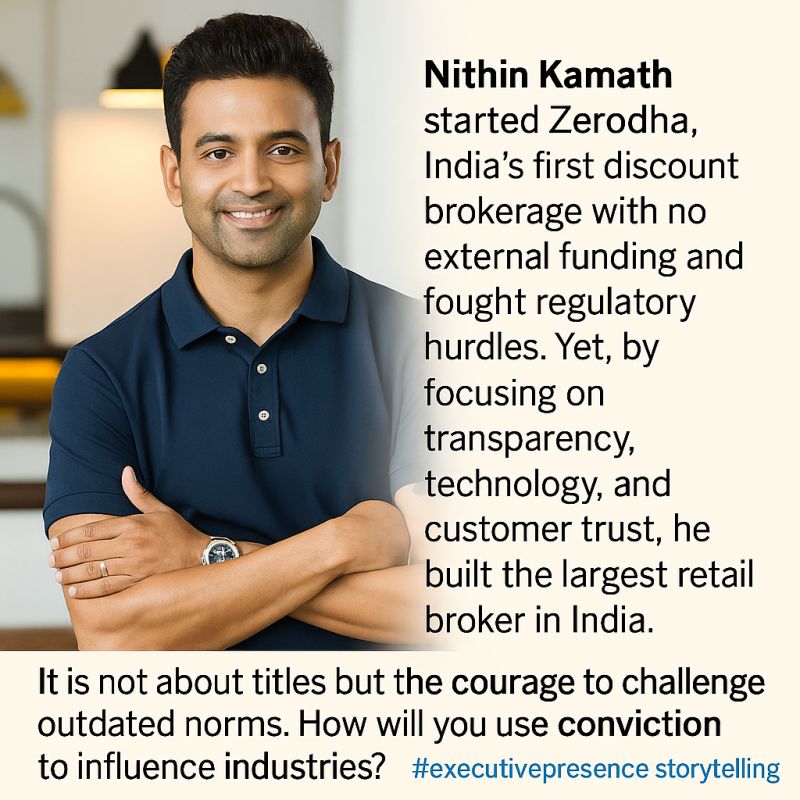“Stories constitute the single most powerful weapon in a leader’s arsenal.” – Dr. Howard Gardner
In an age of dashboards and data, why are the best leaders turning to stories? Because numbers inform — but stories inspire. Harvard research shows people remember stories 22 times more than data. Storytelling connects head and heart, translating corporate vision into emotional resonance — the foundation of executive presence and leadership influence.
Yet, even competent leaders falter as storytellers. Here are the eight mistakes they make — and how to overcome them.
1. Drowning in Data, Starving for Meaning
Many leaders over-rely on charts instead of context. Facts without emotion fail to move people. Example: Howard Schultz didn’t speak of coffee margins — he told stories of his father’s struggles, inspiring Starbucks’ culture of care. Lesson: Data tells what happened; stories explain why it matters.
2. Avoiding Vulnerability
Strong leaders often hide their struggles, fearing it’ll weaken authority. In truth, vulnerability deepens connection. Example: Sheryl Sandberg’s openness about loss at Facebook turned her into a symbol of resilience. Lesson: Authentic stories build trust. Coaching helps leaders craft relatable narratives that humanize power.
3. Ignoring the Audience
Great stories speak to who’s listening. Leaders often deliver one-size-fits-all talks that miss the emotional mark. Example: Satya Nadella’s story of empathy for his differently-abled son transformed Microsoft’s culture. Lesson: Tailor your message to the hearts of your people, not just their minds.
4. Over-Explaining Everything
Too much detail clouds clarity. Storytelling isn’t about length — it’s about essence. Example: Steve Jobs’ iPhone launch wasn’t a product demo — it was the story of reinventing the phone. Lesson: Simplify to amplify. Edit your message until it moves people, not overwhelms them.
5. Mistaking Performance for Presence
Some leaders rehearse lines so perfectly they lose authenticity. Example: Barack Obama’s calm pauses and measured tone built gravitas without theatrics. Lesson: Presence is felt, not performed. Focus on connection, not perfection.
6. Skipping the Conflict
Every great story has tension. Leaders who skip the struggle sound hollow. Example: Elon Musk’s tale of near bankruptcy before Tesla’s success made his journey believable. Lesson: Share your storms before you show the sunrise — it earns respect, not pity.
7. Hiding Behind Titles
Many leaders speak from authority instead of from experience. Example: Indra Nooyi used gratitude letters to employees’ families to show humility and warmth. Lesson: Titles command respect; stories earn devotion.
8. Forgetting Emotion Is the Currency of Influence
Some leaders try to impress instead of connect. True gravitas comes from emotional clarity. Example: Nelson Mandela’s stories of forgiveness after 27 years in prison moved nations. Lesson: Leadership storytelling isn’t about being dramatic — it’s about being deeply human.
Final Thought
Storytelling isn’t an optional leadership trait — it’s the core of influence. When data is forgotten, stories remain. With the right framework, coaching, and intention, anyone can become a powerful storyteller.
Anand Munshi, India’s leading Executive Coach & Storytelling Expert, helps leaders translate experience into influence — building gravitas, empathy, and executive presence that inspire organizations to perform beyond purpose.
“Leaders who master storytelling don’t just communicate — they create movements.”
#executivecoaching #executivepresence #storytelling #anandmunshi
Learn more at www.anandmunshi.com.



















